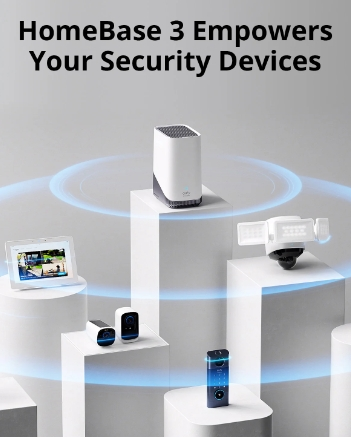Testing your home alarm system regularly is essential for ensuring that it functions effectively to protect your property. Alarm systems are complex devices that rely on multiple components to work in harmony. Regular checks can reveal any issues early, helping to keep the system responsive in emergencies. Testing your alarm involves examining each part, including motion sensors, cameras, and backup power, to confirm that every element is working as intended. This guide provides a comprehensive approach to testing your alarm system, so you can feel confident about your home security.

Importance of Routine Testing for Alarm Reliability
Routine testing of your alarm system is a critical step in maintaining a secure home. A functioning alarm system not only deters potential burglars but also ensures that you and your family are alerted promptly in the event of an intrusion. When left unchecked, systems can develop issues over time due to wear, weather, or even software updates. Regular testing allows you to identify any weak spots and fix them before they become problematic. Ensuring your system is operating as it should means examining both the hardware, like motion detectors and cameras, and the software, which manages alerts and responses.
Steps to Test Each Part of Your Alarm System
Testing each part of home alarm systems is essential for complete peace of mind. By checking components like motion sensors, cameras, and alarms individually, you can ensure that each element of the system is responsive and integrated.
Testing Motion Sensors and Door/Window Contacts
Motion sensors and door/window contacts are among the most critical parts of an alarm system, as they detect movement or unauthorized entry. Begin by activating each sensor, one by one, to ensure it responds correctly. Walk past motion sensors to see if they detect your presence and trigger an alert. Open and close doors and windows where contacts are installed to verify they send the expected signals to the main system. If you have a system that uses advanced features like those found in the eufy HomeBase S380, you’ll benefit from additional accuracy. The S380’s smart algorithms can differentiate between humans, pets, and other non-threatening movements, reducing false alarms and enhancing security. Testing these functions ensures that you’re getting reliable, accurate alerts without unnecessary disruptions.
Ensuring Functionality of Cameras and Sound Alarms
Cameras and sound alarms play a crucial role in both deterring and detecting intruders. Test each camera by checking its video feed and ensuring it captures high-quality images. Also, make sure the cameras can transmit footage in real-time to your smartphone or monitoring system. For systems like the eufy HomeBase S380, confirm that the storage function works correctly and that recorded clips are accessible for later review. Additionally, ensure that any night vision or low-light features function as expected. Sound alarms should also be tested regularly. Activate each alarm to check that the sirens are loud enough to alert both you and potential intruders. The S380, for example, comes with a 100dB siren, which is powerful enough to notify neighbors and discourage unauthorized entry.
Involving Your Monitoring Service in Routine Tests
If your alarm system is connected to a monitoring service, it’s essential to involve them in regular testing. Many monitoring companies recommend scheduled test calls to confirm that your system is transmitting signals properly. This communication can highlight any issues with connectivity or alerts, helping to fix potential disruptions in service. During testing, your provider can confirm that they receive each alert correctly and respond appropriately. Some systems may have self-testing features, where the system automatically communicates with the monitoring center periodically. If you’re using advanced systems, like those compatible with the eufy HomeBase S380, a monitoring service can add an extra layer of security by providing support for various device integrations, ensuring all components work cohesively.
Checking Battery Life and Power Backup for Consistency
An alarm system’s power source is vital for uninterrupted functionality. Regularly testing the batteries and backup power is crucial, especially in cases where power outages could leave your home vulnerable. Many alarm systems, including the eufy HomeBase S380, support continuous recording and storage, which relies on steady power. Checking both the main and backup power sources helps maintain continuous monitoring and secure data storage.

Replacing Batteries and Checking Backup System
Battery-operated sensors and cameras should be tested at least once a year to ensure they don’t run out of power unexpectedly. Replace batteries proactively and check that each component functions well after battery changes. For systems with a backup battery, like some eufy configurations, activate the backup mode to ensure it kicks in seamlessly during a power loss. By doing so, you’ll avoid the risk of your security system going offline when you need it most.
Power and Connectivity Checks
Ensuring consistent power and connectivity for all system components is essential, especially for alarm systems that rely on Wi-Fi or cellular data. Test each device’s connection to the main hub, like the HomeBase S380, to confirm it maintains a strong link. Additionally, check that your internet and mobile app connections work correctly, allowing you to monitor the system remotely without interruptions. Regular connectivity tests can prevent lapses in security that could occur if a camera or sensor disconnects unexpectedly.
Frequency Recommendations for Effective Alarm Testing
For optimal results, regular testing should be conducted based on the manufacturer’s recommendations or your system’s specific needs. As a general rule, testing major components like sensors, alarms, and cameras should occur at least every three months. If you live in a high-risk area or have experienced previous intrusions, you may want to conduct monthly checks. Seasonal changes can also affect system performance, especially for outdoor components. For example, extreme weather can impact sensor sensitivity and camera functionality, so it’s wise to perform additional checks during temperature fluctuations. Many homeowners find it useful to set calendar reminders to stay consistent with their testing routine.
Conclusion
Staying proactive with your home alarm system testing is essential for maintaining security and peace of mind. Regular checks, from motion sensors to cameras and backup power, ensure that each part of your system functions as intended. With reliable systems like the eufy HomeBase S380, which combines central management, real-time alerts, and advanced detection, you can enjoy added security and a seamless user experience. By following these steps and sticking to a testing schedule, you can feel confident that your home is well-protected against intrusions.
